Considerations for Custom ultrasound probe cable
Among the medical cables we produce, Ultrasound probe cable makes us distinguished from ordinary cable extruding manufacturer. Inside a soft and limited jacket, there are more than 200 strands micro coaxial cable (Usually 44AWG,44AWG and 42AWG) and some of them also include some Electric wires. Being different from other cable, when ultrasound transducer cable is assembly into a bundle, the coaxial cable are not stranded (this is depended by its structure and performance requirement.)
When choose or design ultrasound probe cable, following factors should be considered:
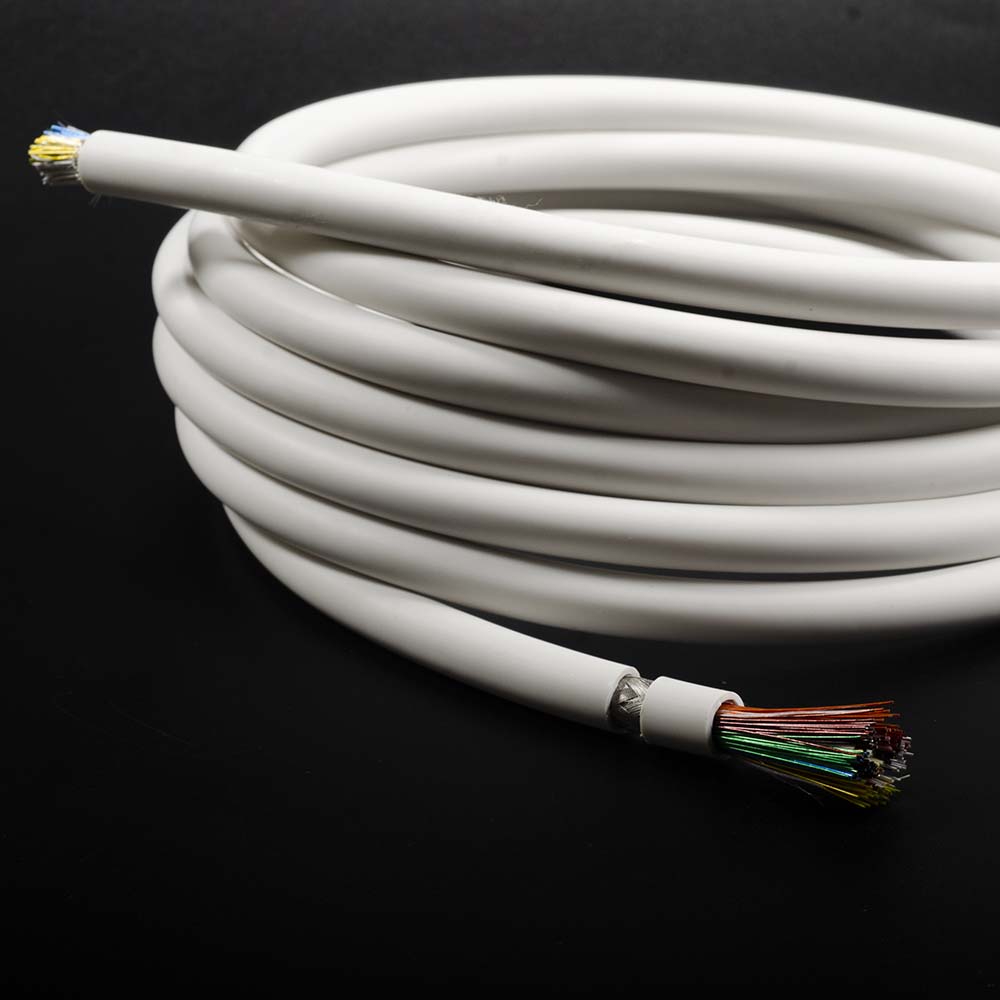
204 Wire Ultrasound probe cable
200Cx42AWG(50pF)+4C ×30AWG Condutor:Silver plated Copper Alloy Diameter:9.60±0.40mm
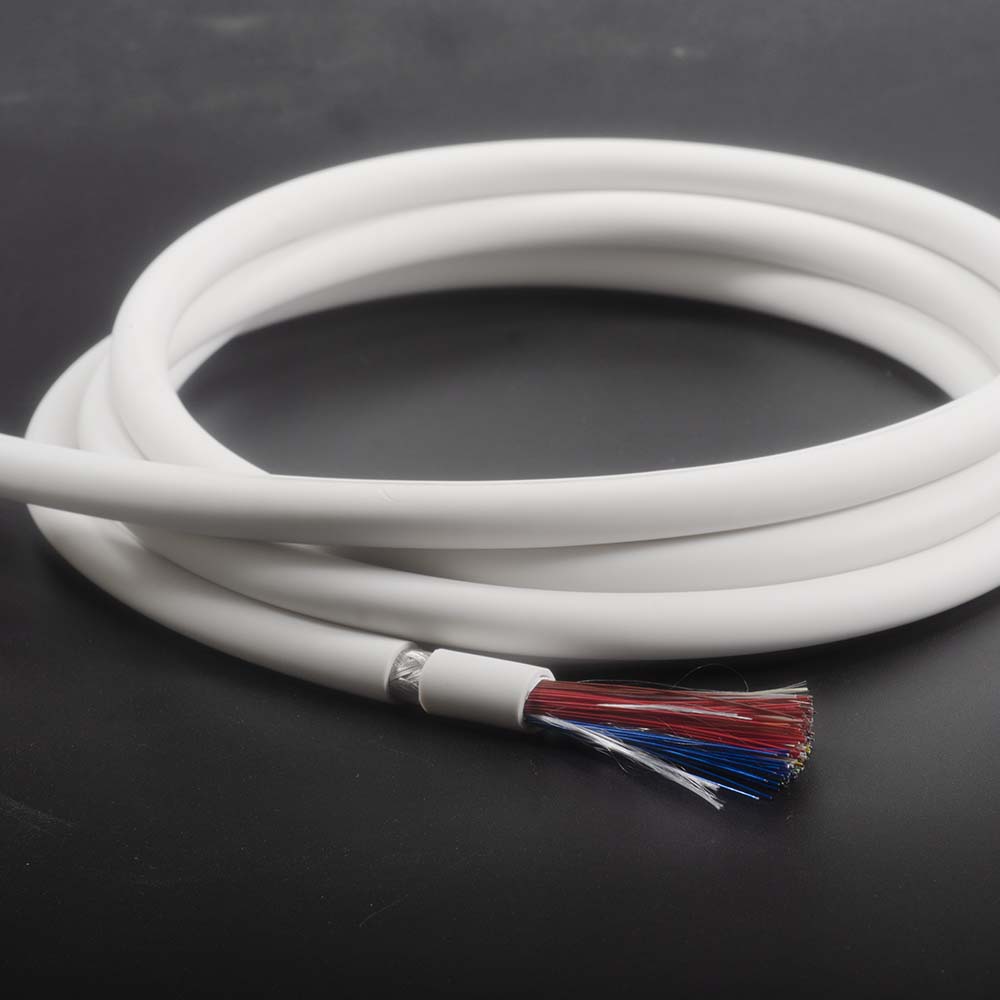
198C 42AWG Ultrasound probe cable
198Cx42AWG(60pF) Condutor:Silver plated Copper Alloy Diameter:7.6±0.30mm
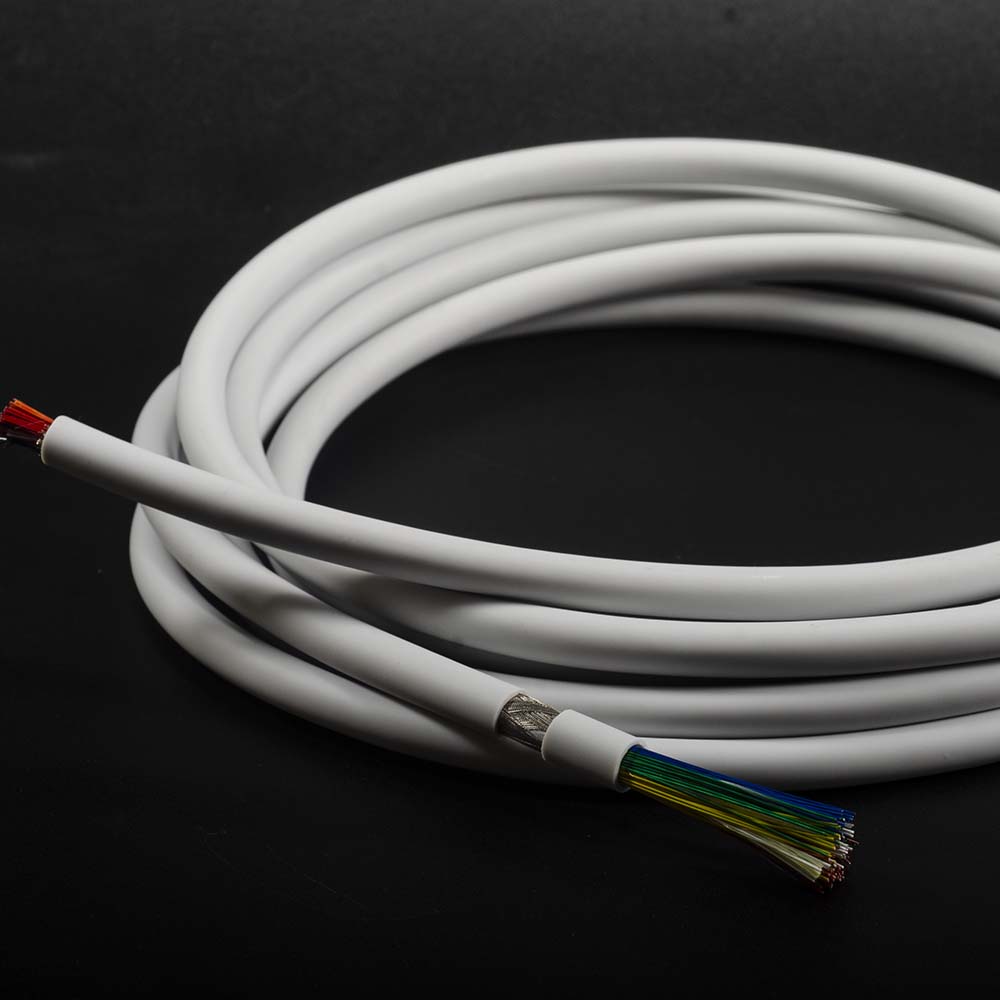
130 wire Ultrasound probe cable
130Cx42AWG(60pF) Condutor:Silver plated Copper Alloy Diameter:7.0±0.30mm
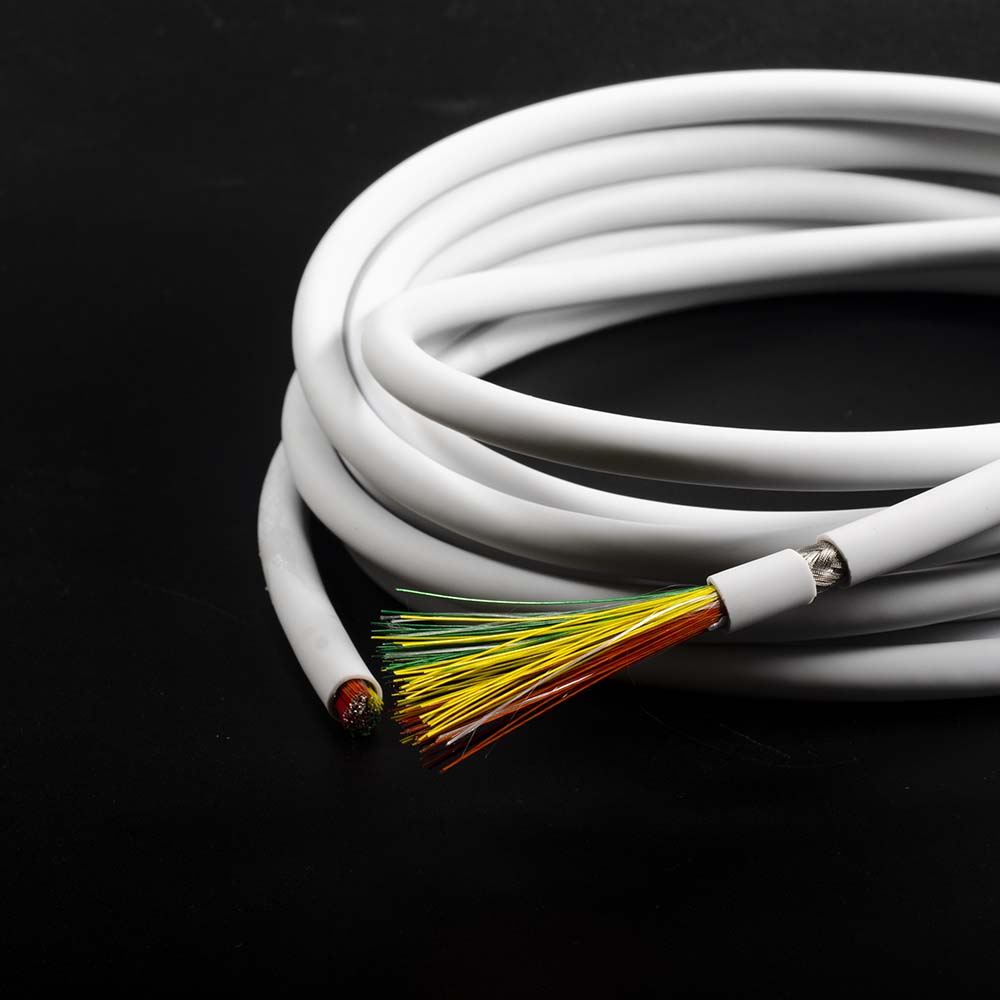
198 wire 44AWG Ultrasound probe cable
198Cx44AWG(60pF) Condutor:Silver plated Copper Alloy Diameter:8.3±0.30mm
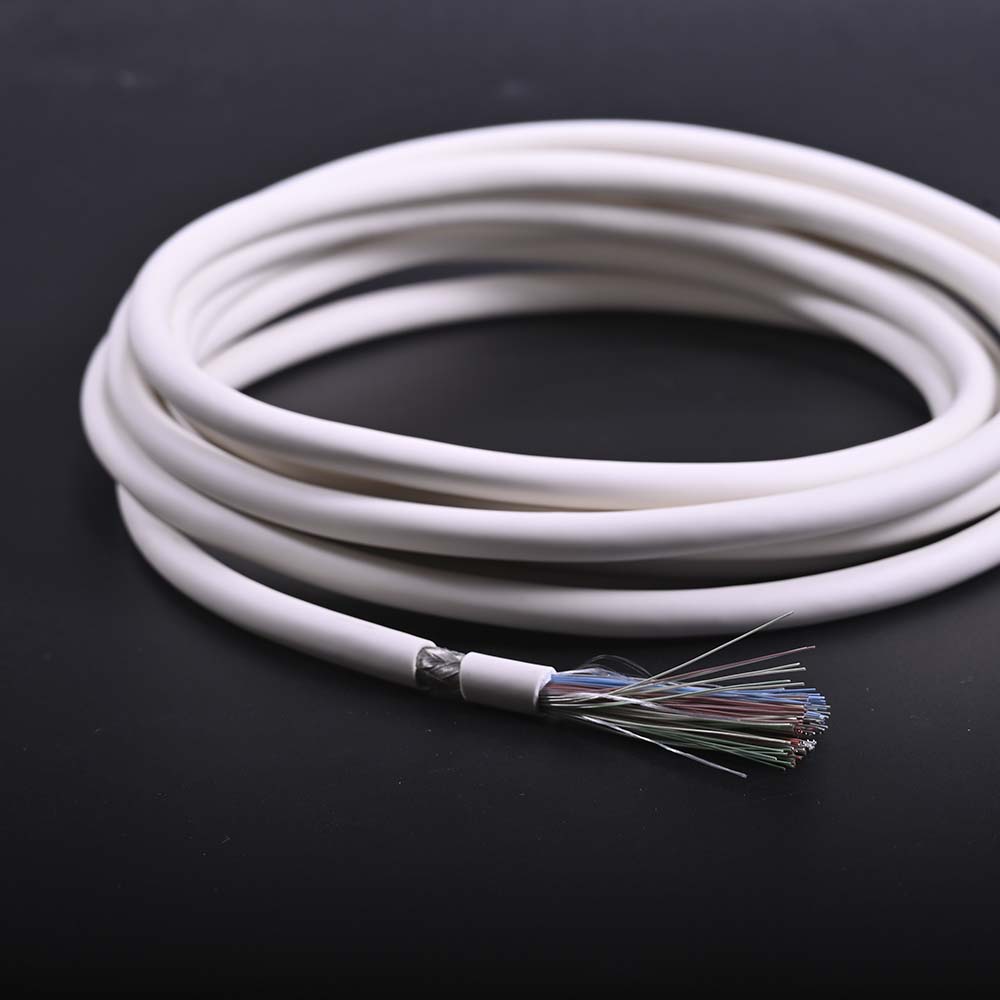
146 Wire Ultrasound probe cable
.138Cx42AWG(110pF)+8C×30AWG Condutor:Silver plated Copper Alloy Diameter:6.6±0.30mm
Importance of Coaxial Cable
Function: The coaxial cable is a crucial component in ultrasound probes for transmitting ultrasound signals.
Principle: Through the piezoelectric effect, the coaxial cable transmits electrical signals to excite the ultrasound crystal, generating ultrasound waves, while also converting reflected signals into electrical signals.
Factors in Coaxial Cable Design
Selection of AWG: AWG value affects wire diameter; smaller AWG values reduce resistance, aiding in signal transmission.(Silver Plated Copper Alloy is the prior choice for conductor )
Resistance, Flexibility, Frequency Characteristics: Optimal design considers electrical performance, mechanical properties, and adaptation to frequency ranges.
Shielding Effect: Coaxial cables typically have a shielding layer to prevent external electromagnetic interference.
Detailed Design
Ultrasound probe coaxial cables are often more intricate to meet the specific requirements of medical imaging. They may include finer wires, shielding layers, and special materials to minimize signal loss during ultrasound transmission and reception.
Material Selection:
The materials used in ultrasound probe coaxial cables are typically medical-grade, offering higher durability, biocompatibility, and adaptability to medical environments.
Frequency Characteristics:
Ultrasound probe coaxial cables may be optimized for specific ultrasound frequencies and applications. Different medical imaging applications may require different ultrasound frequencies, influencing coaxial cable design.
Shielding Effect:
Ultrasound probe coaxial cables often require stronger shielding effects to prevent external electromagnetic interference. Signal accuracy is crucial in medical imaging.
Flexibility:
Ultrasound probe coaxial cables may require higher flexibility to adapt to the dynamic operational environment of medical imaging. Physicians may need probes with certain bending capabilities during ultrasound examinations.
Size and Shape:
Ultrasound probe coaxial cables may have stricter size and shape requirements to fit the probe’s design and specific imaging application.
ultrasound probe coaxial cables are designed to meet the specific demands of medical ultrasound imaging, featuring higher precision, medical-grade materials, and a more complex structure to ensure high-quality transmission and reception of ultrasound signals.
Relationship Between Ultrasound Probe Cable and Probe Frequency
The relationship between ultrasound probe cables and probe frequency is significant, impacting the propagation and reception characteristics of ultrasound waves and, consequently, the quality and resolution of ultrasound imaging.
Coaxial Cable Frequency Characteristics:
The design of coaxial cables needs to consider the frequency of ultrasound waves. Higher ultrasound frequencies may result in more noticeable attenuation of coaxial cables during transmission. Therefore, for high-frequency ultrasound probes, coaxial cables with lower attenuation characteristics are chosen to ensure effective signal transmission.
Probe Frequency Range:
The design of ultrasound probes typically includes a specific range of ultrasound frequencies. Different medical imaging applications may necessitate different ultrasound frequencies. Therefore, the design of coaxial cables must account for these frequency characteristics.
Matching Principle:
The selection of coaxial cables should align with the working frequency range of the ultrasound probe. Mismatched frequency characteristics between the coaxial cable and probe may lead to signal attenuation and distortion, affecting imaging clarity and accuracy.
Distinction Between High and Low-Frequency Coaxial Cables:
For high-frequency B-mode ultrasound, coaxial cables may require more precise and low-attenuation designs to ensure effective transmission of high-frequency signals. Conversely, for low-frequency B-mode ultrasound, emphasis may be on the flexibility and adaptability of coaxial cables to meet the imaging needs of deeper tissues.
In conclusion, the relationship between ultrasound probe cables and probe frequency requires a comprehensive consideration of ultrasound wave frequency characteristics, coaxial cable materials and design, and the specific requirements of the ultrasound probe application. Well-matched coaxial cables contribute to improved efficiency in ultrasound signal transmission, ensuring clear and accurate imaging results.